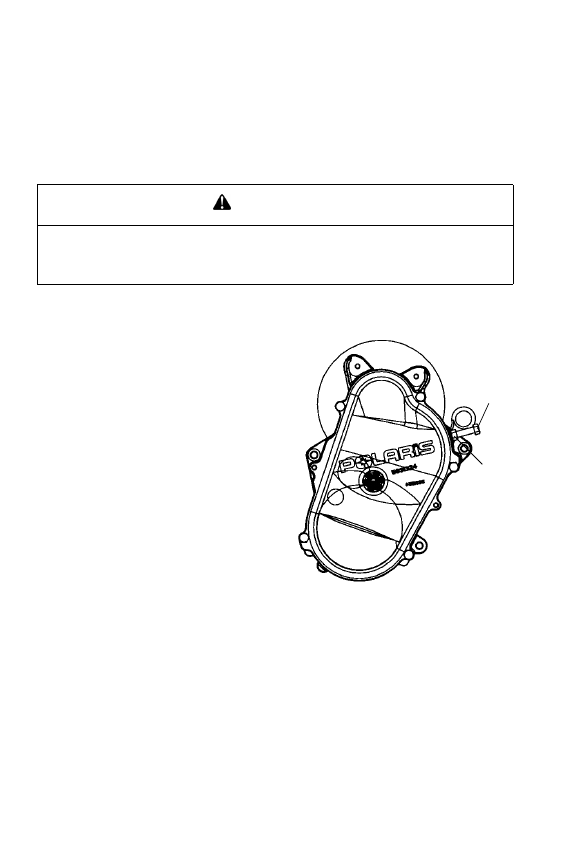Snowmobile Polaris 340 Edge / 550 LX (2008 year). Instruction - part 21

84
MAINTENANCE
Exhaust System
Check the exhaust system for wear or damage at approximately 2000
miles (3200 km). To inspect, allow the engine and exhaust system to
cool completely. Open the hood and inspect the muffler and pipes for
cracks or damage. Check for weak or missing retaining springs or
damper/support grommets.
Drive Chain Tension
Check drive chain tension
weekly and before each long trip.
To obtain correct chain tension:
1. Rotate the driven clutch
counterclockwise to move all
chain slack to the tensioner
side. Lock the brake lever
lock, or have an assistant
hold the brake lever firmly.
2. Loosen the adjuster bolt jam
nut (1).
3. Finger tighten the adjuster
bolt (2) until it can no longer
be adjusted by hand, then
back off 1/4 turn.
4. Tighten the jam nut while
holding the adjuster bolt.
Torque to 21 ft. lbs. (28 Nm).
5. Release the brake lever lock.
WARNING
Hot exhaust system parts can cause serious burns. Allow adequate time for
the exhaust system to cool. Never perform this procedure with the engine
running.
1
2